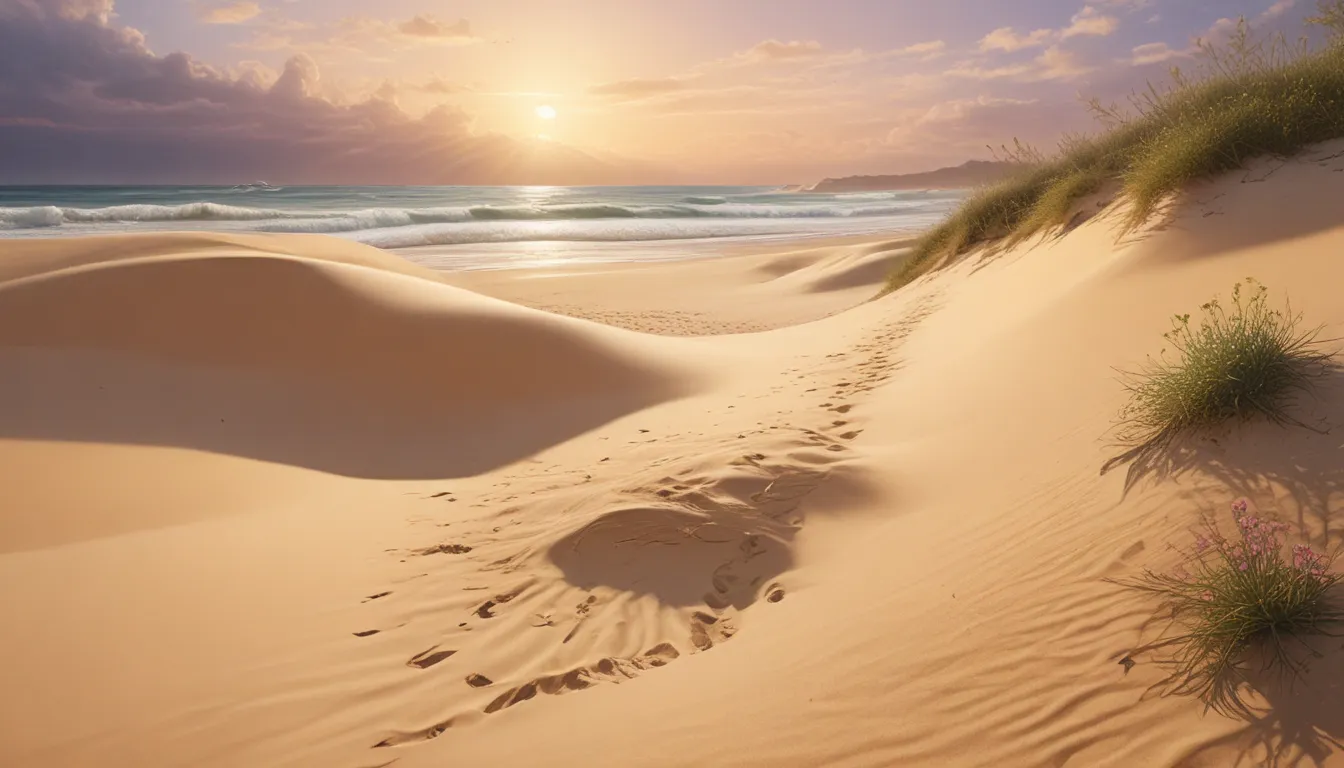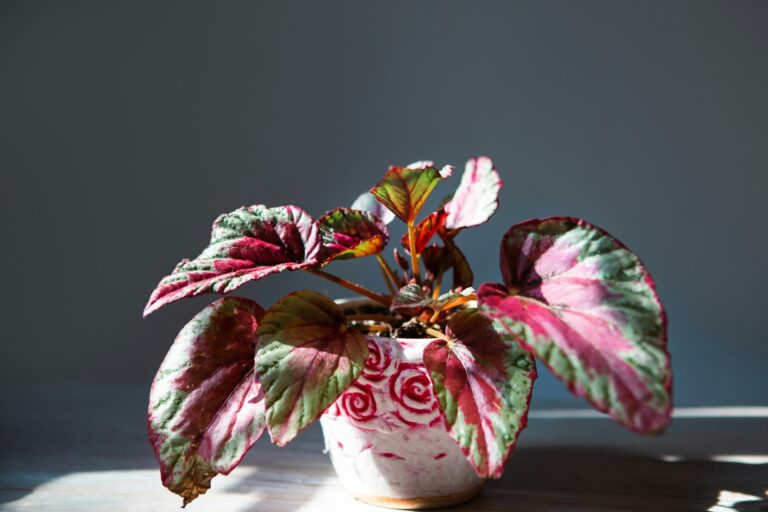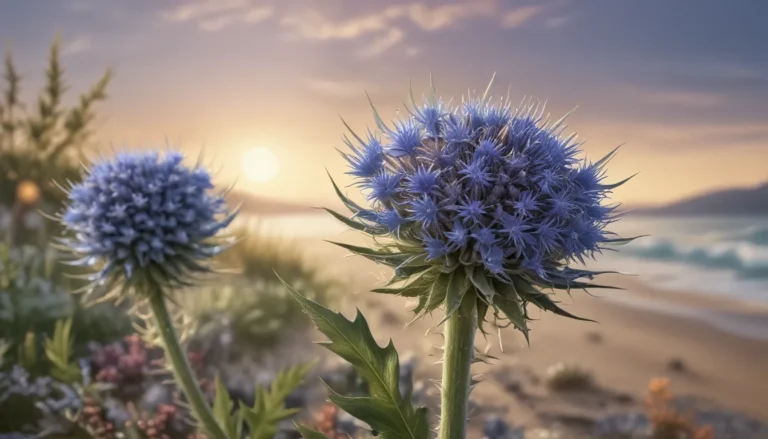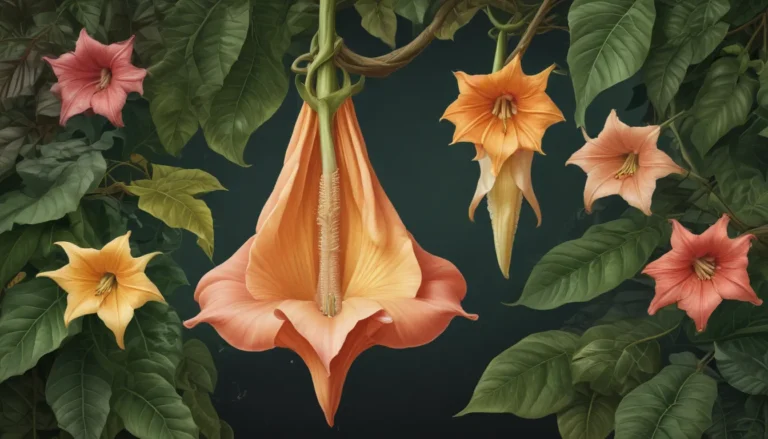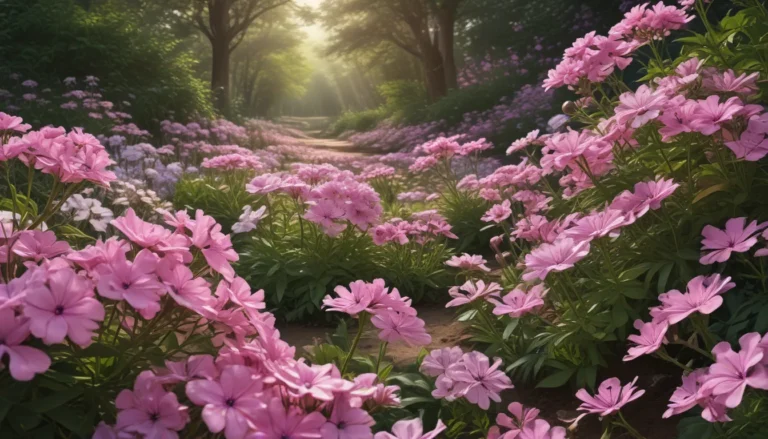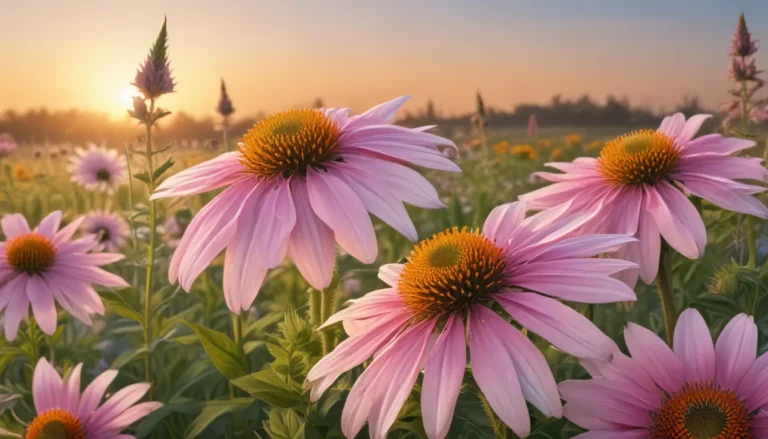The pictures we use in our articles might not show exactly what the words say. We choose these pictures to make you interested in reading more. The pictures work together with the words but don’t take their place. The words still tell you the important facts.
Sand Verbena, also known as Abronia, is a captivating group of flowering plants that thrive in sandy coastal areas and deserts around the world. These remarkable plants have evolved unique characteristics to survive in harsh environments, making them a fascinating subject for plant enthusiasts and nature lovers alike. In this article, we will delve into 12 intriguing facts about Sand Verbena, from its vibrant blooms to its important role in ecosystem conservation.
The Beauty of Sand Verbena
Sand Verbena, scientifically known as Abronia, is a stunning wildflower native to the arid regions of North America. Known for its vibrant and colorful blooms, Sand Verbena adds a touch of beauty to coastal landscapes and desert environments.
Attracting Pollinators
One of the remarkable features of Sand Verbena is its ability to attract various pollinators, including bees, butterflies, and hummingbirds. The nectar-rich flowers serve as an important food source for these essential pollinators, contributing to the biodiversity of coastal ecosystems.
Thriving in Coastal Environments
Sand Verbena is well adapted to sandy coastal environments, commonly found along dunes, beaches, and coastal scrub areas. Its deep root system helps it withstand harsh coastal winds and salt spray, allowing it to thrive in challenging conditions.
Blooming Seasons
Sand Verbena blooms typically occur during the spring and summer months, showcasing a range of colors from pink and purple to white. The colorful spectacle of Sand Verbena flowers adds a vibrant touch to coastal landscapes, attracting admiration from onlookers.
Drought Tolerance
As a native plant of arid regions, Sand Verbena has developed adaptations to thrive in drought-like conditions. Its succulent leaves and water storage capabilities enable it to survive prolonged periods of dryness, making it a resilient species in challenging environments.
Medicinal Properties
Traditional uses of Sand Verbena in indigenous communities include its medicinal properties. With healing and anti-inflammatory effects, Sand Verbena is utilized in natural remedies for various ailments, showcasing the beneficial qualities of this plant beyond its aesthetic appeal.
Symbol of Beauty and Resilience
In Native American cultures, Sand Verbena symbolizes beauty and resilience, reflecting its ability to flourish in tough environmental conditions. It serves as a reminder of the strength and adaptability of nature, embodying the harmony between plants and their habitats.
Dormant Seeds
An intriguing aspect of Sand Verbena's reproductive strategy is the ability of its seeds to remain dormant in the soil for years, waiting for favorable conditions to germinate. This reproductive strategy enhances the species' resilience and persistence in unpredictable environments.
Fragrant Blooms
The fragrant blooms of Sand Verbena emit a delightful scent described as sweet and floral, attracting both pollinators and humans who appreciate its aromatic qualities. The enchanting fragrance adds to the overall appeal of this beautiful wildflower.
Container Gardening
For those without access to coastal environments, Sand Verbena can be grown in containers, allowing individuals to enjoy its beauty in a garden setting. Its adaptability makes it a suitable choice for container gardening, offering the opportunity to create a mini coastal garden at home.
Ecosystem Conservation
As a native plant species, Sand Verbena plays a crucial role in ecosystem conservation by supporting a diverse range of organisms, including insects, birds, and wildlife. Its presence contributes to the overall health and balance of coastal ecosystems, highlighting the importance of preserving native plant species.
Protected Species
Due to its ecological significance and vulnerability to habitat loss, Sand Verbena is protected in certain regions. Conservation efforts aim to safeguard its natural habitats and ensure the long-term survival of this captivating wildflower, emphasizing the importance of protecting biodiversity.
Conclusion: Embracing the Wonders of Sand Verbena
Sand Verbena is a remarkable plant with a multitude of fascinating characteristics, from its vibrant colors to its resilience in challenging environments. Whether you're a botanist, nature enthusiast, or simply curious about the natural world, exploring the world of Sand Verbena is sure to captivate your interest. Next time you encounter these beautiful flowers in coastal or desert landscapes, take a moment to appreciate their unique beauty and the incredible adaptations that enable them to thrive.
FAQs: Exploring Sand Verbena
- Where can I find Sand Verbena? Sand Verbena is commonly found along sandy beaches, dunes, and desert environments, thriving in coastal and arid regions with well-drained soils.
- What are the main colors of Sand Verbena? Sand Verbena typically comes in shades of pink, purple, and lavender, with some species also exhibiting white, yellow, and red varieties.
- Is Sand Verbena a drought-tolerant plant? Yes, Sand Verbena is highly drought-tolerant, thanks to its water-storing capabilities that enable it to survive in arid conditions with limited water availability.
- Are Sand Verbena flowers fragrant? Some species of Sand Verbena have fragrant flowers, emitting scents ranging from subtle to strong, depending on the species and individual plant.
- Can Sand Verbena withstand strong winds? Sand Verbena has evolved to tolerate strong winds, making it well-suited for coastal and desert habitats with its low-growing habit and sturdy stems.
- How do Sand Verbena plants reproduce? Sand Verbena reproduces through seeds and vegetative propagation, with small flowers turning into seed pods containing numerous seeds for dispersal.
- Can Sand Verbena be grown in a garden? Yes, Sand Verbena can be cultivated in a garden by mimicking its natural habitat with well-drained soil, ample sunlight, and minimal water requirements for successful growth.
Embark on a journey of discovery into the enchanting world of Sand Verbena, where beauty, resilience, and biodiversity intertwine to create a captivating botanical spectacle. As you explore the wonders of native plants and ecosystems, let the stories of Sand Verbena inspire a deeper appreciation for the intricate balance of nature. Join us in celebrating the marvels of the natural world, from the smallest blooms to the vast landscapes that sustain life. The beauty of Sand Verbena awaits your exploration, offering a glimpse into the fascinating world of wildflowers and their enduring legacy in the ecosystem.
